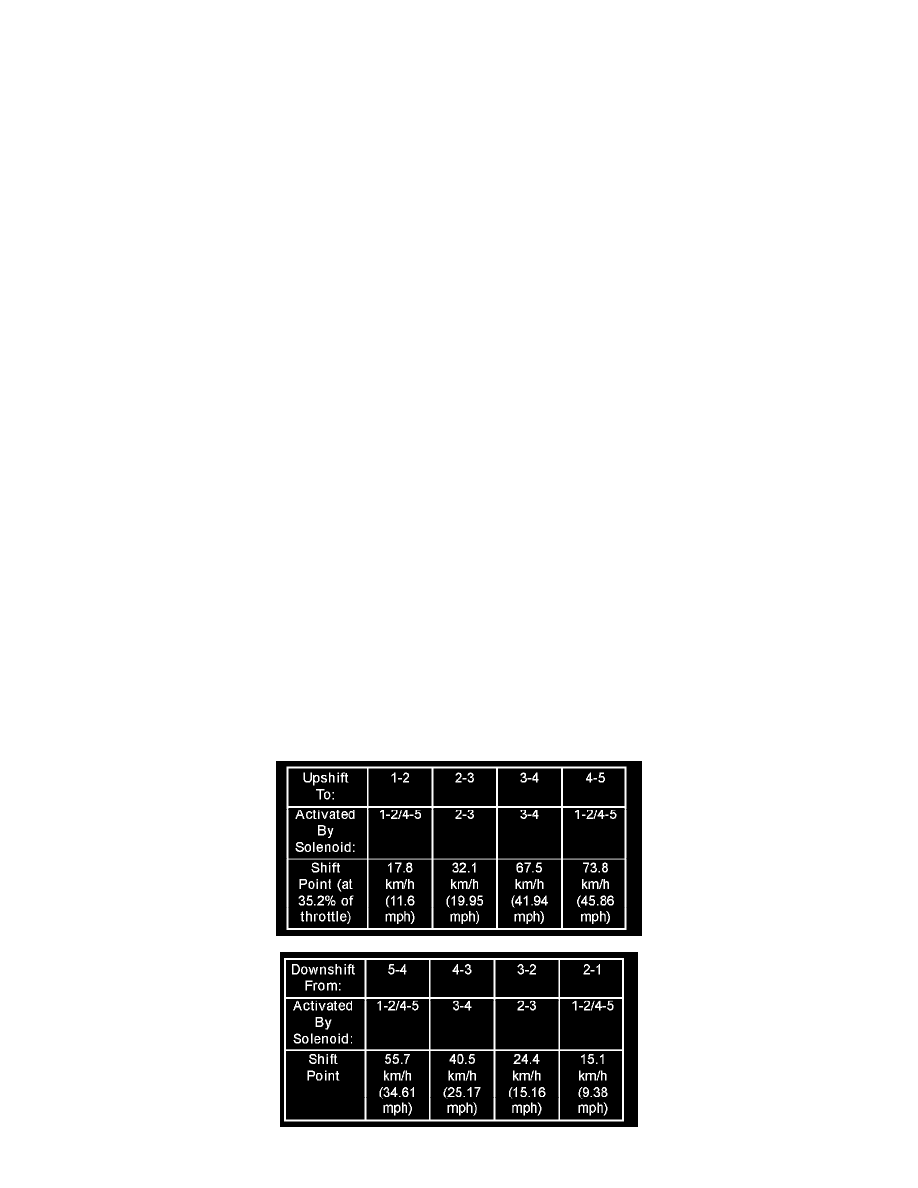Sprinter 2500 L5-2.7L DSL Turbo (2003)

input signal for the TCM. The temperature of the ATF has an influence on the shift time and resulting shift quality. As the temperature rises, resistance
rises, and therefore, the probing voltage is decreasing. Because of its registration, the shifting process can be optimized in all temperature ranges.
The ATF temperature sensor is wired in series with the park/neutral contact. The temperature signal is transmitted to the TCM only when the reed
contact of the park/neutral contact is closed because the TCM only reads ATF temperature while in any forward gear, or REVERSE. When the
transmission is in PARK or NEUTRAL, the TCM will substitute the engine temperature for the ATF temperature.
Starter Interlock
The TCM monitors a contact switch wired in series with the transmission temperature sensor to determine PARK and NEUTRAL positions. The contact
switch is open in PARK and NEUTRAL. The TCM senses transmission temperature as high (switch supply voltage), confirming switch status as open.
The TCM then broadcasts a message over CAN bus to confirm switch status. The PCM receives this information and allows operation of the starter
circuit.
N2 and N3 Speed Sensors
The N2 and N3 Input Speed Sensors are two Hall-effect speed sensors that are mounted internally in the transmission and are used by the TCM to
calculate the transmission's input speed. Since the input speed cannot be measured directly, two of the drive elements are measured. Two input speed
sensors were required because both drive elements are not active in all gears.
CAN C Bus Indirect Input Signals
A 2.5-volt bias (operating voltage) is present on the CAN C bus any time the ignition switch is in the RUN position. Both the TCM and the ABS apply
this bias. On this vehicle, the CAN C bus is used for module data exchange only. The indirect inputs used on the NAG1 electronic control system are:
-
Wheel Speed Sensors.
-
Brake Switch.
-
Engine RPM.
-
Engine Temperature.
-
Cruise Control Status.
-
Gear Limit Request.
-
Throttle Position - 0% at idle, 100% at WOT. If open, TCM assumes idle (0% throttle opening).
-
Odometer Mileage
-
Maximum Effective Torque.
-
Engine in Limp-In Mode/Mileage Where DTC Was Set.
BRAKE TRANSMISSION SHIFT INTERLOCK (BTSI)
The BTSI solenoid prevents shifting out of the PARK position until the ignition key is in the RUN position and the brake pedal is pressed. The TCM
controls the ground while the ignition switch supplies power to the BTSI solenoid. The PCM monitors the brake switch and broadcasts brake switch
status messages over the CAN C bus. If the park brake is depressed and there is power (Run/Start) to SLA, the BTSI solenoid deactivates.
SHIFT SCHEDULES
